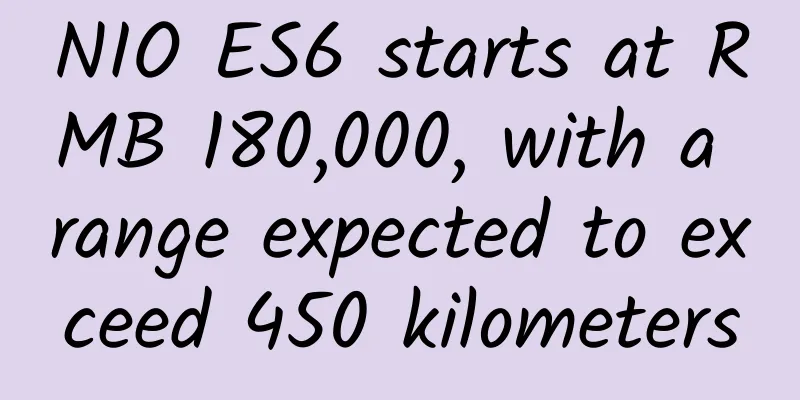Five-minute technical talk | A brief discussion on Android application startup optimization methods

|
The difficulty of startup speed optimization is closely related to the specific app. Basically, as the number of users and business increases, the difficulty of startup optimization also increases. Therefore, different developers often have very different understandings of startup optimization due to the different apps they face. This article makes an in-depth analysis of startup optimization work, from the definition of startup optimization problems, to the detailed decomposition of the problems, to the specific optimization steps and the tools that need to be used, to help developers efficiently solve startup performance problems. Except for the tool part in the article, which is targeted at the Android platform, the rest of the thinking should be universal. Part 01Problem DefinitionStartup optimization is a very common task. When many developers hear this term, they will basically subconsciously explain it as: "Startup optimization is to improve the startup speed of the app." This understanding is the most direct and simple, but it only covers part of the content of startup optimization. The overall startup optimization work can be summarized as follows: Under certain system resources , optimize the application startup process so that the key path of application startup can maximize the use of system resources and remain within a stable range for a long time. Any problem needs to be defined first to help us reduce complexity and determine the scope of solution implementation. For startup optimization, the first thing to do is to define the starting and ending points of the app to be optimized. The definition of the starting and ending positions may be different for different apps. We usually recommend starting from the perspective of user experience to make a definition that suits each situation. Part 02Data is the most importantData is the top priority in our optimization work. It guides the direction of optimization work. Optimization work should be carried out based on the principle of discovering problems from data and ultimately verifying solutions to problems through data . Therefore, before implementing the optimization strategy, the first thing to do is to collect the startup phase data as detailed as possible, including the current startup time, the time taken to start each sub-phase, the time taken by various asynchronous tasks, the CPU and other system resource usage during the startup phase, the process and thread status, etc. All this data needs to be collected and analyzed from different dimensions. The work of data sorting and collection can help us sort out the current indicators on the one hand, and on the other hand, the process of sorting data can deepen developers' understanding of the entire system startup process from the code level, help developers grasp the main context of system startup, understand it clearly, and establish the relationship between data items and code logic. When a certain data item fluctuates, developers can directly locate the code module that may have problems. Part 03Optimization ideasLooking at the startup speed optimization work alone, we can start from two directions: business process optimization and system resource utilization optimization . 3.1 Business process optimization Business process optimization is to optimize the business processes involved in the startup phase. The business process optimization mentioned here has two meanings:
Point 1 should be easy to understand. Let’s explain point 2: During the overall startup process, we need to find the critical path of the startup process, which is often composed of multiple different processes. If there is a waiting situation in the tasks and processes on the critical path, then it is the place we need to optimize. For example, an app with a splash screen ad at startup needs to fetch ad data at startup and enter the main interface after the ad display is finished. Then the acquisition of ad data and the display after acquisition can be understood as two related subtasks in the startup phase. If the ad data is still not returned after the main thread enters the ad display phase, there will be a waiting time for the ad data to return, that is, there is no effective connection between the subthreads (tasks). In the business process optimization part, the most important thing people pay attention to is the management of various startup tasks. Many shared articles introduce the design of the asynchronous management framework for startup tasks. I will not repeat this part here. We will add other aspects related to task management:
3.2 System Resource Optimization Business process optimization and system resource utilization optimization are not separate. Business process optimization is to ensure that we use system resources most effectively, while system resource utilization optimization allows us to examine whether the current business process is reasonable from another perspective. Many data indicators of system resources are difficult to measure, such as how to measure the CPU utilization rate during the startup phase, how to measure the execution efficiency of threads, etc. Therefore, it is difficult to collect online data for this part of the work. Developers should focus on improving development tools and discovering problems through tools. System resource optimization mainly depends on the following indicators:
The above two directions of work basically cover most of the work content of startup speed index optimization. It is worth pointing out that the above work does not mean that all aspects are optimized once and for all, but it is necessary to look back frequently, because as the optimization work progresses, the startup status will change (for example, locks that did not conflict before may start to conflict). Another point worth noting is that for each specific optimization strategy, developers should conduct sufficient testing in a local experimental environment, such as evaluating the benefits of the optimization strategy for high-end, medium-end, and low-end models and different network types. Due to the different online models and complex network conditions, many times the strategy cannot achieve the expected effect after it is launched, so it is best to compare the observed data through online AB experiments for each optimization. 3.3 Continuous Performance Guarantee - Fighting Entropy Another important aspect of startup optimization is how to continuously ensure that the current optimization effect does not deteriorate with the iteration of functions. Our optimization of processes and resource usage is essentially to ensure a certain orderliness in the code execution process. This orderliness ensures the resource utilization rate of the startup key link. However, with the increase of code and the increasing number of app businesses, this orderliness is very easy to break. According to the law of increasing entropy, if we do not take measures, the system will definitely develop in a chaotic direction. That is to say, no matter how much effort you have put into optimization before, the system performance will always gradually deteriorate. If you do not deal with this deterioration trend, all your efforts will be wasted. So how do we fight against entropy increase? In our daily lives, a road section is under repair from time to time. This repair is a way to fight against entropy increase, and it is also the strategy we should take in engineering - discovering and solving problems. However, in the code, the discovery of problems is not so intuitive. The data can tell us that the performance has deteriorated, but it often takes us a lot of effort to locate the specific point of deterioration. So in terms of continuous assurance, what we need to do is to find problems as early as possible and locate and solve them as soon as possible. The continuous assurance mechanism requires the establishment of a laboratory performance testing environment:
In general, for startup performance optimization, we need to establish the workflow shown in the figure below to ensure the efficiency, effectiveness and sustained effect of the optimization work: picture Above we mainly listed the thinking directions for starting the optimization work, and did not cover all the optimization points under these directions. It is worth pointing out that when we formulate optimization strategies, we need to adapt to local conditions according to the situation of each app , find problem points according to our own situation, and determine the priority of optimization strategies, which strategies should be prioritized and which strategies are unnecessary to implement (considering ROI); at the same time, we need to evaluate the benefits of each strategy in advance, rather than listing all strategies and optimizing them one by one. Part 04Optimization Tools (Android)If you want to do your work well, you must first sharpen your tools. In the optimization work, we often encounter problems like the following:
For thread optimization, IO optimization and other special projects, there are tools like Matrix, which can help us find problems. I would like to focus on the Perfetto tool provided by Android, because it can help us understand the entire system startup process and the usage of various system resources. And based on the API provided by Perfetto, we can develop powerful automatic analysis tools to help us produce automated tools in finding problems, locating problems, and evaluating the effectiveness of optimization strategies. 4.1 Introduction to Perfetto Function First of all, the visualization tools provided by Perfetto can help us analyze the situation of the app running for a period of time from various different angles. Here are a few simple examples: Check the CPU time occupied by each process over a period of time: picture Check the CPU usage of threads in different processes over a period of time: picture Display thread execution status information over a period of time: picture In addition to the above examples, visualization tools can also analyze multi-thread lock contention problems, file IO problems, Heap memory changes , etc., which are very helpful for daily optimization work. The above are just examples, and many functions still need to be used in practice to further experience. The real power of Perfetto is not the visualization tools it provides, but the ability to collect and analyze data:
In fact, Perfetto provides us with a set of tools that can automatically analyze app performance and discover performance problems . If this automation capability is combined with our daily development pipeline, it will be of great help in early detection of performance problems and prevention of degradation. As the application version iterates, the application startup data will change accordingly, so startup optimization work also needs long-term iteration to ensure the continuous guarantee of the startup experience. This article mainly summarizes the ideas, implementation methods and tools of startup optimization work. In actual work, the optimization problems faced by applications with different user scales are also different. I hope the summary here can inspire you. |
<<: iOS 17 releases dual system updates!
>>: Microsoft optimizes Teams Shifts app to send shift notifications to designated employees
Recommend
The king of comfort, lightness and no burden, Sony LinkBuds is both "sweet" and novel!
As a world-class audio equipment manufacturer, So...
iOS 16.1.2 official version released, signal problem finally solved
Early this morning, Apple pushed the official ver...
Android dynamic loading: DL framework
Today we introduce a new concept: dynamic loading...
The "behind-the-scenes promoter" of the accelerated expansion of the universe is slowly pulling back...
Physicists have long assumed that dark energy is ...
It’s confirmed, drinking coffee is actually good for your health?
For many people, coffee It has a refreshing effec...
6 practical cases of marketing and promotion of Bilibili!
Today, the fragmented society has led to a sharp ...
Lu Jing: Searching for "bones" and exploring the present to live up to the passion
She traces the past and explores the future in th...
1,400 earthquakes a day! Iceland's volcano is about to erupt. Will it "stir up" the global climate?
According to AFP, there has been a significant in...
Video e-commerce: You can see it but you can’t buy it
At the end of October, Alibaba and JD.com announc...
Create an APP in four months from zero foundation
[[132507]] OK, actually, my title is a bit mislea...
Paleontologist: Doctor, please make an appointment for me at the Department of Dentistry!
Produced by: Science Popularization China Author:...
Talk about the key points of B-end, C-end and G-end operations
Based on practical experience and combined with i...
WeChat “Tap”: the greatest common denominator of socializing with acquaintances and strangers
The day before yesterday, the WeChat team announc...
China Shipbuilding Industry Association: China's shipbuilding capacity utilization monitoring index hit a 10-year high in 2022
According to the China Shipbuilding Industry Asso...
Surface 2 to be released on September 23 with 1080p screen
[September 9 news] Microsoft has sent out invitat...









